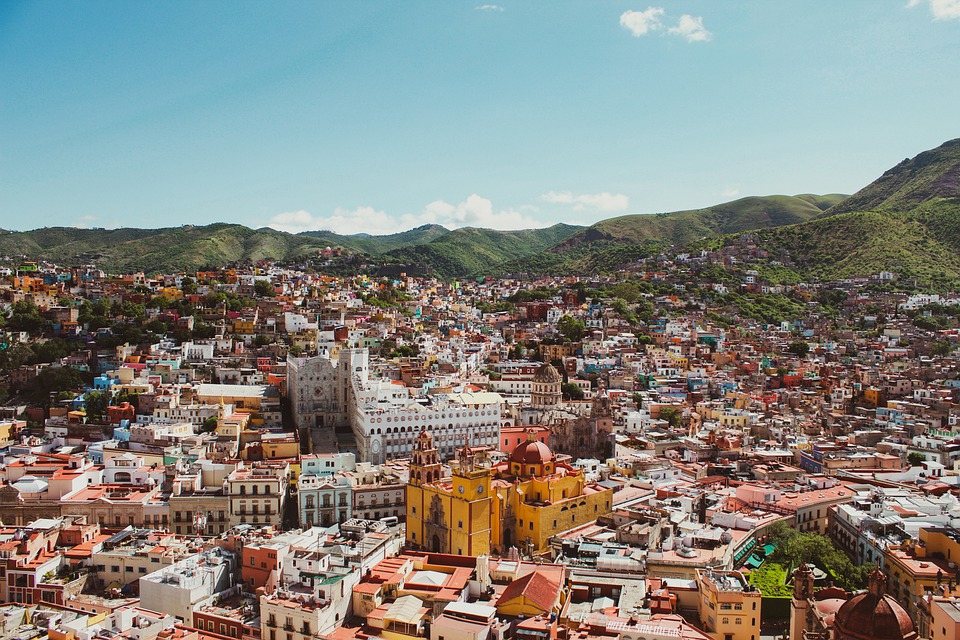By Taylor Schaefer, Staff Writer for Save The Water™ | June 9, 2014
Water is the source of life for all living things on this planet. However, it has become a breeding ground for pathogenic microorganisms and intestinal parasites in most developing countries. People around the world have heard the term “Montezuma’s revenge,” a common gastrointestinal illness caused by drinking unsanitary water in Mexico. Studies performed on the water in Mexico City present the serious issue of unsafe water many face in Mexico. Fecal contamination and high levels of chlorine and fluoride, has put more stress on the already scarce water supply in the Valley of Mexico.
Mexico City is one of the largest cities in the world, with a population of 19 million.(3) Increased urbanization and a constant growth in population size has put a serious stress on the supply of water coming to the city. It’s geographic location has also not been a beneficial factor, forcing the city to look elsewhere for water sources. Mexico City pulls its water from different sources outside the city and each origin influences the quality of water received. For example, studies show that the salt content decreased from the northern parts of the city to the southern parts.(2)
Frequently the water delivered to Mexico City comes from local wells or transferred by tank trucks which creates a more variable supply. Tests performed on five different water sources including kitchen taps, the main municipal network intake, cisterns, and roof tanks revealed high levels of chlorine in all sources due to storage for an ensured supply during the dry season.(2)
Other tests showed poor bacteriological quality, including total and faecal coliforms which varied in each part of the city’s municipal network intake. The northern and eastern areas of the city seemed to test higher for levels of pollution due to total faecal coliforms and faecal streptococci.(2)The south and western areas of the city tested positive for the same bacteria but presented less pollution than the north and eastern areas.(2) Studies predicted that the high levels of contamination are due to poorly preserved and eroded pipes, which are also from microorganism pollution within the drainage systems.(2)
The kitchen tap water quality was found to be the worst, with 73 percent of the water being bacteriologically polluted and deemed unsafe for consumption.(2)This is linked to the improper handling and inadequate storage from the polluted environment.
Another dangerous element posing a threat to the people of Mexico City is the high intake of fluoride. It has been reported that over five million people in Mexico are exposed to high concentrations of fluoride, which is found in drinking water, salt and bottled drinks.(1) High fluoride consumption can cause dental and skeletal fluorosis, susceptibility to kidney disease, and cancer, and can affect brain development in young children.(1)
In order to determine the mass of a certain substance in a solution, the measurement ppm (part per million) is used. Water higher than a fluoride concentration of 0.7 ppm is considered to be health risk.(1) A study done in Mexico City concluded that there was a fluoride concentration ranging between .821 and 1.190 ppm.(1) This is a great concern, especially because the highest concentrations were found in downtown Mexico City where the population density is greater than most areas, especially for young children.(1)
With high concentrations of chlorine, fluoride, and faecal coliforms in many parts of Mexico City, studies show that the majority of the drinking water is unsafe for public consumption. Increased urbanization, a growing population, exploitation of aquifers, and struggling to meet water demands, all have a great effect on the water supply and water quality in Mexico City.(2) Preventative measures must be implemented in order to encourage a better quality of life for the people of Mexico City.
References:
1. Galicia Chacón, Luis; Molina Frechero, Nelly; Oropeza Oropeza, Anastacio; Gaona, Enrique; Juárez López, Lilia. 2011. “Análisis de la concentración de fluoruro en agua potable de la delegación Tláhuac, Ciudad de México.” Revista internacional de contaminación ambiental. Vol.27, no. 4, ISSN 0188-4999. http://www.scielo.org.mx/scielo.php?script=sci_arttext&pid=S0188-49992011000400001&lang=en – accessed on June 6, 2014.
2. Martha Gaytán, Teresa Castro, Patricia Bonilla, Alfonso Lugo, Gloria Vilaclara. 1997. “Preliminary study of selected drinking water samples in Mexico City” Revista Internacional de Contaminación Ambiental. Universidad Nacional Autónoma de México, México. Vol. 13, no. 2, pp. 73-79. http://www.redalyc.org/articulo.oa?id=37013203 – accessed on June 6, 2014.
3. Central Intelligence Agency. May 1, 2014. “The World Factbook: Mexico”. https://www.cia.gov/library/publications/the-world-factbook/geos/mx.html – accessed on June 6, 2014.





